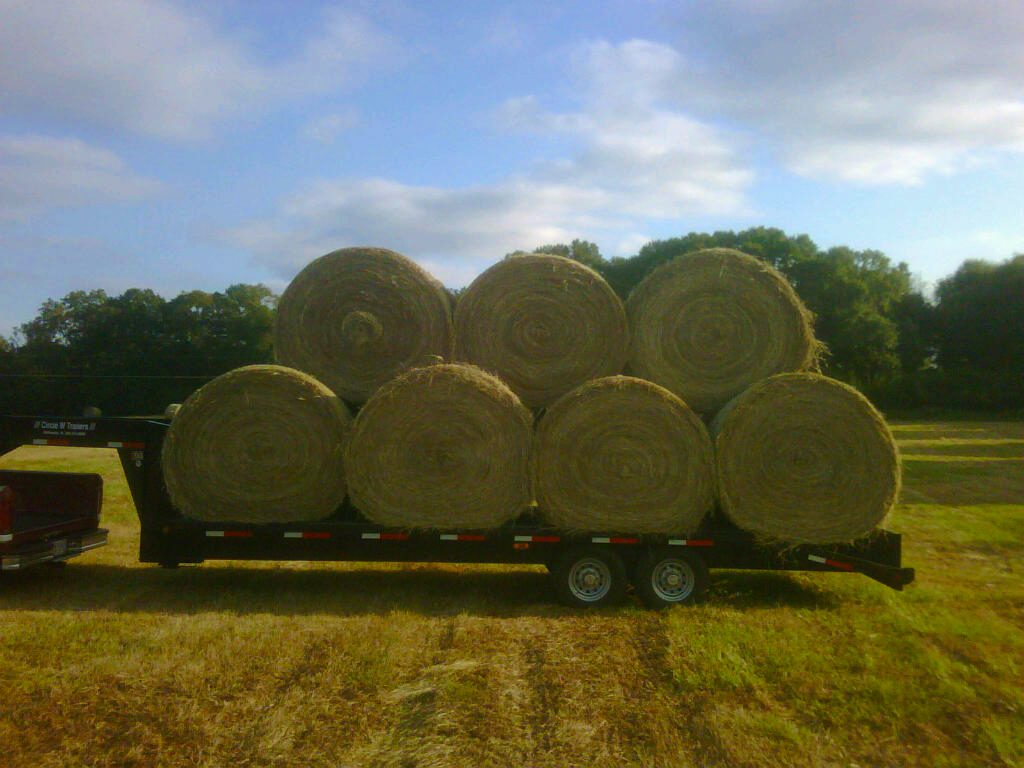Crop Production

Learn about the essential nutrients and micronutrients in the soil and review the table of high-yielding Alabama crops for establishing crop removal.
Nutrient removal indicates the amount of nutrient removed with the crop production and should be an important consideration in overall soil fertility management for Alabama farmers. However, fertilizing based solely on nutrient removal could lead to nutrient deficiencies or result in overuse of some fertilizer nutrients. The behavior of each nutrient, soil properties, and crops to be grown must also be considered.
Nitrogen

Hay crops can remove around 50-10-45 pounds N-P2O5-K20 p
Leaching and denitrification of fertilizer nitrates may result in as much as 50 percent fertilizer nitrogen lost. Some nitrogen may be supplied from organic matter in the soil, but this amount is usually small in Alabama soils. Soil microorganisms can also tie up soil nitrogen as fresh organic residues decay. Legumes obtain all of their nitrogen requirements through fixation of atmospheric nitrogen by Rhizobia bacteria in nodules on the roots. Although legumes such as soybeans, peanuts, and alfalfa remove large quantities of nitrogen, as much as 100 pounds per acre of nitrogen are returned to the soil in the crop residue.
Phosphorus
Crop removal is not a good indicator of fertilizer phosphorus needs. Well-fertilized soils have an abundant reserve of soil phosphorus available to crops. Since phosphorus does not leach, it can build up to very high levels in well-fertilized crops. However, any factor that inhibits root growth can also limit phosphorus uptake, even in “high” phosphorus soils. On the other hand, high rates need to be applied to soils testing low in phosphorus because a large portion of the fertilizer phosphorus is tied up by soil iron, aluminum, and calcium.
Potassium
Fertilization based on crop removal works better for fertilizer potassium than any other nutrient. In most Alabama soils, some leaching of potassium results in less than 100 percent fertilizer efficiency. Mineralization of potassium from primary soil minerals and organic residues occurs, but this may not be large enough for high-yielding crops. Fertilizer potassium will also accumulate in clayey soil horizons (subsoils) underlying sandy surface soils. If crop removal of potassium is greater than fertilizer applied, deficiencies can occur on succeeding crops. This is particularly serious where cotton, soybeans, or peanuts follow a poorly fertilized grass forage crop. Grasses are efficient users of soil potassium and can deplete soil reserves if biomass is harvested.
Calcium and Magnesium
Crop removal is seldom a consideration with these two nutrients because properly limed soils contain excesses of calcium and magnesium. Some crops, such as peanuts, peppers, and tomatoes, have special calcium needs and may require the addition of calcium on some soils beyond what the crop actually removes.
Sulfur
Crop removal of sulfur could be used as a fertilizing guide on deep, sandy soils that retain very little sulfur. However, most Alabama soils contain adequate sulfur as sulfate in the clayey subsoil. Rainfall deposits sulfur each year from atmospheric sources, but a significant reduction in SO2 emissions has resulted in reduced sulfate deposition in the latest decade. Combine this with sulfur mineralized from organic matter, and enough sulfur is available for Alabama crops. However, fertilizing according to crop removal would be good insurance on sandy soils. It is recommended that all crops receive about 10 to 20 pounds of sulfur per acre per year in fertilizer applications.
Boron
Sandy surface soils do not retain Boron, so it must be added annually to those crops sensitive to boron deficiencies. Crop removal is a reasonable estimate of need, but practicality and leaching dictate using several times this much. Cotton, peanuts, reseeding clovers, alfalfa, and vegetable crops often require boron fertilization on sandier soils.
Copper, Iron, Manganese, and Zinc
The availability of these micronutrients has little to do with crop removal. They are needed in extremely small quantities, and often, as is the case with iron, the soil contains thousands of times more than the crop needs for maximum production. Soil properties such as pH and organic matter govern micronutrient availability to plants.
Table 1 can be used as a guide for establishing crop removal. Yields are for high-yielding Alabama crops. Values reported in this table may differ from values from other sources. Healthy, high-yielding crops can vary considerably in the nutrient concentration in the grain, fruit, leaves, stems, and pods. Plant uptake is also higher than crop removal. Nutrients not actually removed from the land are returned to the soil in organic residues. Crop removal should be adjusted in proportion to the actual yield.
Table 1. Nutrient Removal by High-Yielding Alabama Crops
Prepared from the International Plant Nutrition Institute data.
 Revised by Eros Francisco, Extension Grain Crops Agronomist, Assistant Professor, Crop, Soil, and Environmental Sciences. Originally written or revised by Audrey Gamble, former Extension Specialist, and Charles C. Mitchell, former Extension Agronomist, Professor Emeritus, all with Auburn University.
Revised by Eros Francisco, Extension Grain Crops Agronomist, Assistant Professor, Crop, Soil, and Environmental Sciences. Originally written or revised by Audrey Gamble, former Extension Specialist, and Charles C. Mitchell, former Extension Agronomist, Professor Emeritus, all with Auburn University.
Revised July 2023, Nutrient Removal by Alabama Crops, ANR-0449
